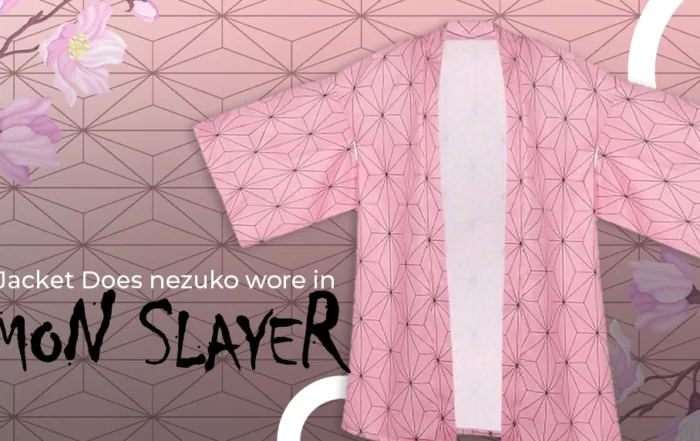Introduction
The biker jacket was invented in the early 1900s and, despite being a piece of clothing that is naturally useful, has always been a mainstay in the world of fashion. The biker jacket has shown its versatility truly is for everyone, whether it’s a hulking middle-aged man with arguably too many tattoos or a contemporary influencer adding a little edge to their wardrobe.
Founders of Schott NYC, siblings Irving and Jack Schott, invented the first biker jacket in 1913. The Perfecto, the world’s first motorbike jacket, was introduced by the siblings for Harley Davidson in 1928, though. Rock stars and fashionistas alike prefer the biker jacket as a symbol of coolness and rebellion over time. We will look at the origins of the biker jacket and how it has influenced current fashion trends in this piece.
History of Biker Jacket:
1920s-1930s:
Motorcycle users wore the first biker jackets, which were created in the early 1920s, as protective clothing. They had a wide collar, asymmetrical zippers, and a tight fit. They were constructed of heavy, thick leather.
These jackets became popular among motorcycle gangs, which gave them a rebellious and edgy reputation.
In the early 1930s, the Schott Company introduced the Perfecto, the quintessential biker jacket. The jacket was named after the Perfecto cigar, the favourite of the company’s founder, Irving Schott. The Perfecto was made of thick horsehide leather, featuring asymmetrical zippers and a belted waist.
Biker jackets did not have a reputation as a fashion piece at the time, and motorbike riders usually wore them. The biker jacket became famous and associated with rebellious youth culture in the 1950s.
1940s-1950s:
The A-2 bomber jacket is a variation of the biker jacket designed specifically for aircraft by the military during World War II. Compared to previous motorcycle jackets, this one was more streamlined and had a knit collar and cuffs. Thanks in part to movies like The Wild One (1953), in which Marlon Brando wore a biker jacket, the biker jacket gained popularity among citizens after the war.
Each rider used embroidered patches, pins, and studs to adorn their jackets and customise them individually in this period. These embellishments often represented the rider’s club or group affiliation, making the jacket an essential part of their identity.
The 1950s also saw the emergence of the “Perfecto” jacket, designed by Irving Schott, which became the most iconic biker jacket style. The Perfecto featured a distinctive asymmetrical zipper, wide lapels, and epaulettes and was named after Schott’s favourite cigar.
1960s-1970s:
During 1960-1970, singers, artists, and other dissidents started wearing motorcycle jackets. However, patches, studs, and other embellishments were to added make it more beautiful.
Biker jackets were also produced using contemporary fabrics like vinyl and nylon.
The biker jacket was viewed as a symbol of rebellion against the status quo during this period of societal upheaval.
During this period, biker gangs like the Hells Angels and the Outlaws helped to popularise the biker jacket.
They would customize their jackets with patches and badges, which showed their allegiance to their gang and their involvement in motorcycle culture. The jackets were typically heavy-duty leather, with zippers, studs, and buckles for added protection and style.
Punk fashion was about rebellion and anti-establishment, and the biker jackets fit right in with their edgy and aggressive style. Punks often customize their jackets with safety pins, patches, and studs, creating a more DIY and anarchic look. The biker jacket became a component of the mod subculture in Britain in the 1960s. Scooters, soul music, and fashion were the passions of young, working-class people called mods. They would don tapered pants, polished shoes, and slim-fitting biker jackets to create an elegant and refined appearance that was different from the rough appearance of the biker groups.
The emergence of punk culture, which adopted the biker jacket, occurred in the 1970s.
1980s-1990s:
The biker jacket gained popularity and was integrated into high fashion collections in the 1980s and 1990s. The motorcycle jacket was reimagined by designers like Jean Paul Gaultier and Gianni Versace using materials like silk and more feminine accents like ruffles and embroidery.
The biker jacket became more mainstream during this time, and high-end designers started incorporating it into their collections. Gianni Versace, for example, created his take on the biker jacket, adding more glamour and luxury to the design. He used exotic materials like python and crocodile and added embellishments like gold zippers and buttons to create a more elevated and sophisticated look.
In the 1990s, the grunge movement also embraced the biker jacket, adding a more rebellious and alternative edge to the classic design. Bands like Nirvana and Pearl Jam often feature biker jackets, ripped jeans and flannel shirts in their grunge style. This gave the biker jackets a more casual and laid-back look, which appealed to the younger generation.
Biker Jackets in Today’s Fashion
Biker jackets have been a staple in fashion for decades, and they continue to be a popular choice today. Some of the popular leather jackets of modern times are Harley Davidson Cafe Racer Leather Jacket which is a modern take on the classic Cafe Racer style that emerged in the 1960s, Cobra Kai Jacob Bertrand Black Motorcycle Leather Jacket and Tokyo revengers’ biker jacket.
Today, both men’s and women’s motorcycle coats come in a variety of designs, hues, and materials. You can use leather, plush, or even denim to create them. Although traditional black leather motorcycle jackets are still in demand, designers have also experimented with other colours and prints to give the look a more contemporary edge.
In recent years, the trend of sustainability and ethical fashion has also increased the popularity of second-hand or vintage biker jackets. This not only gives the wearer a unique and timeless piece but also reduces the environmental impact of fast fashion.







Leave A Comment